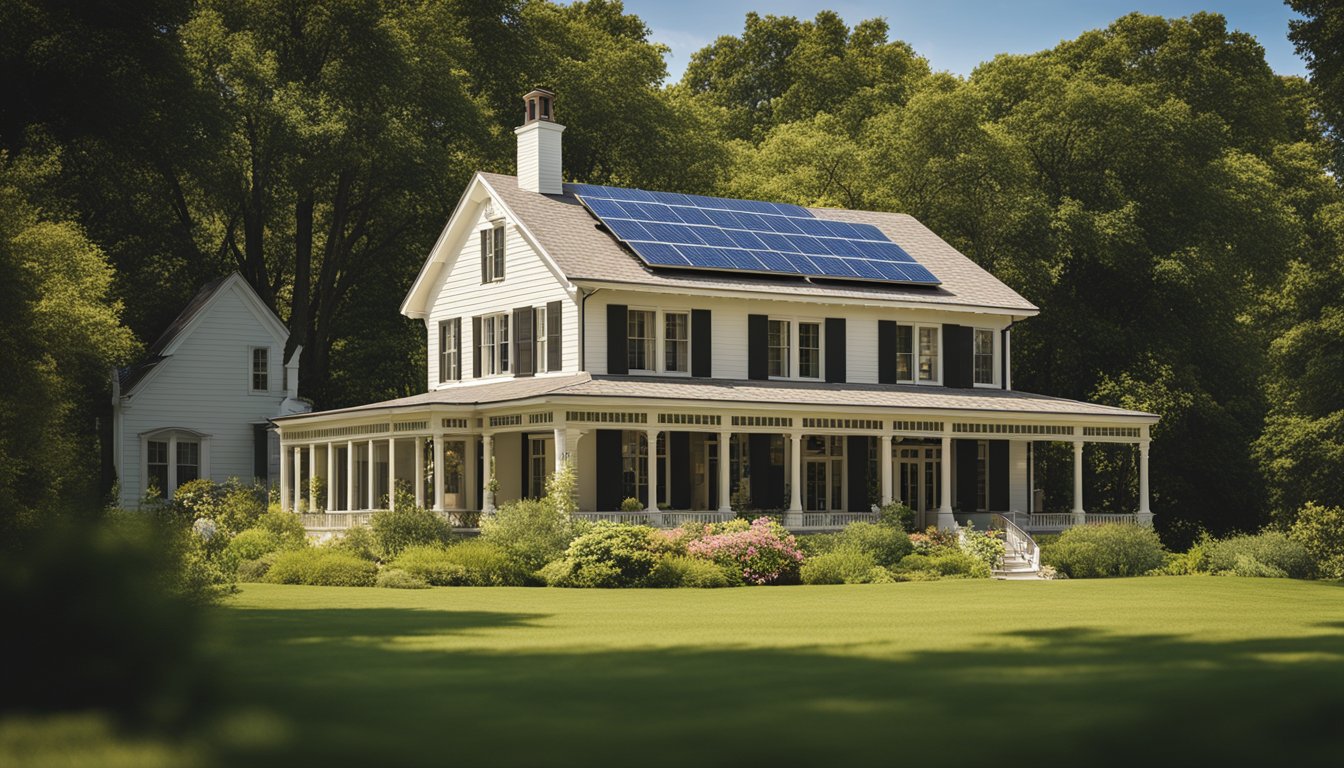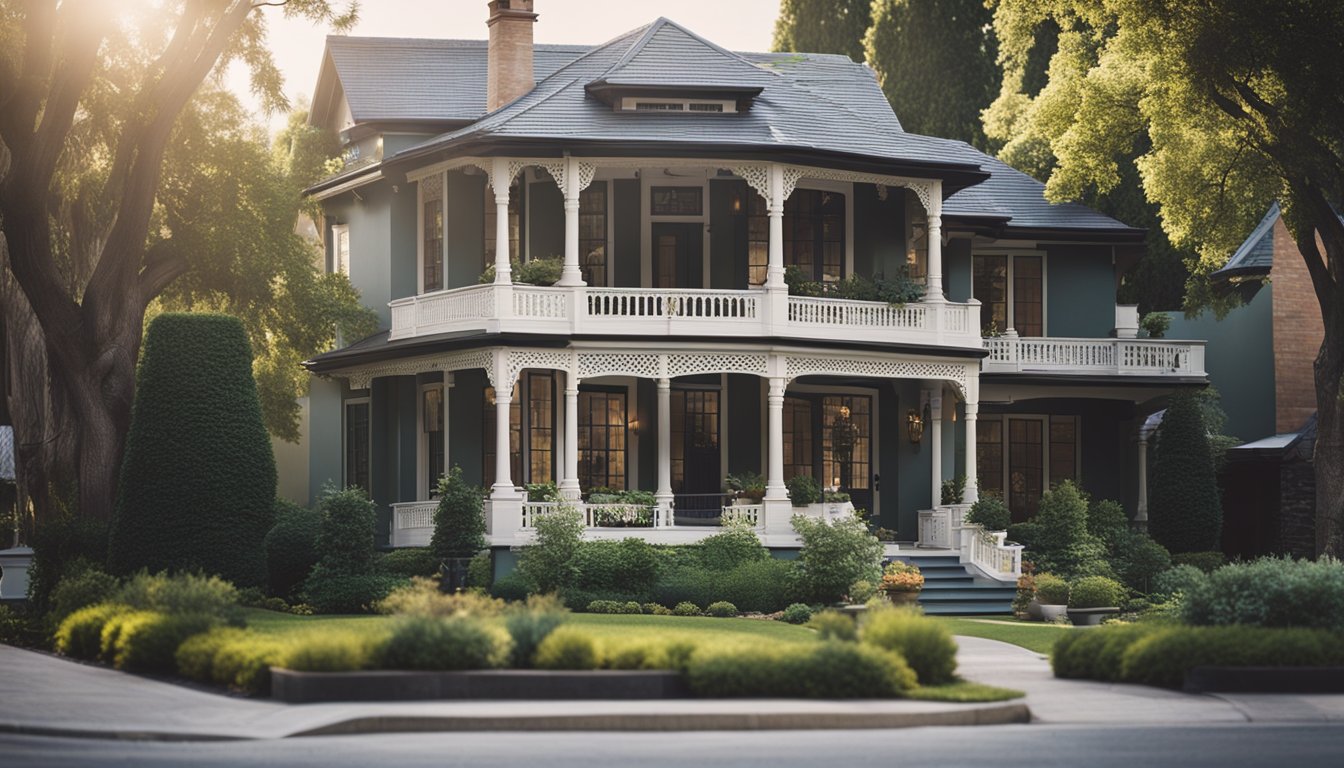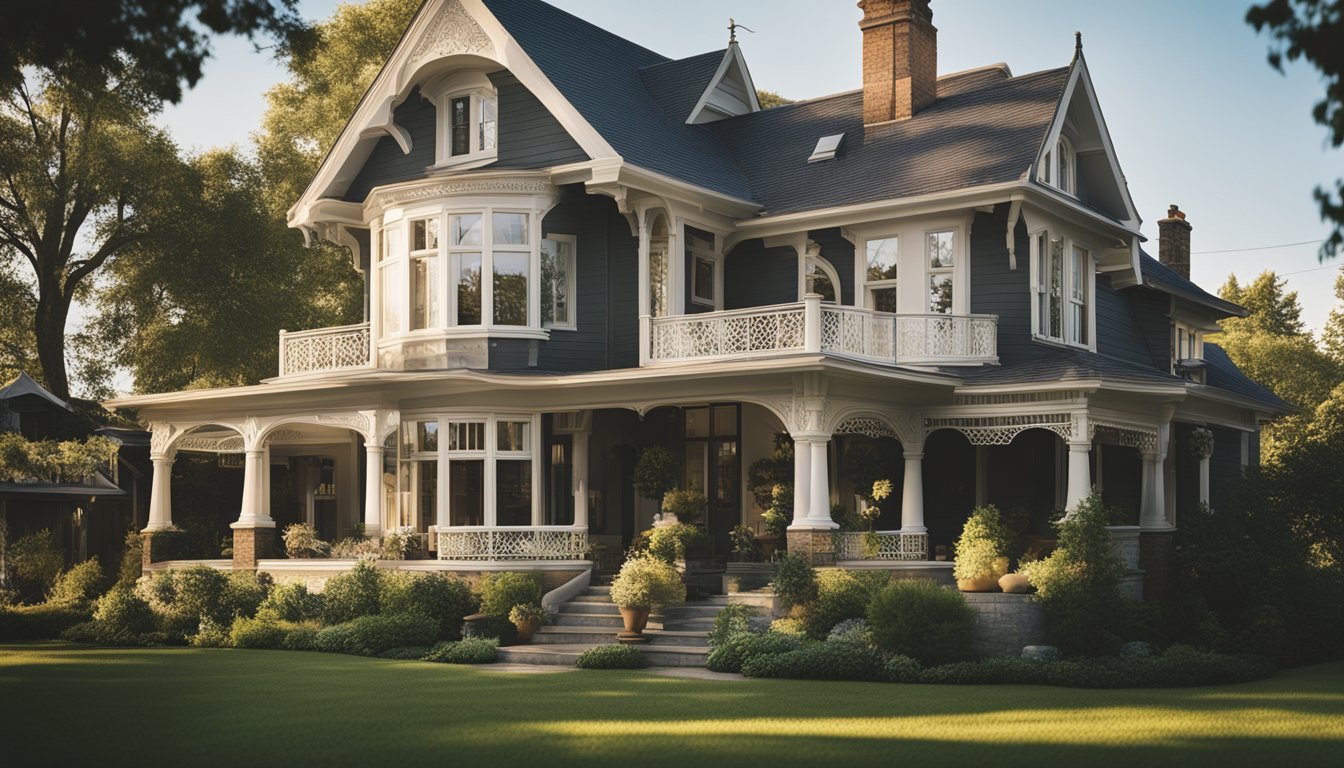Late updated: 11 Oct 2024 15:10
Written by: Daniel Harper
Maximising Energy Efficiency in Heritage Homes: Practical Strategies for Preservation and Sustainability
Maximising energy efficiency in heritage homes is not merely a preference but a crucial step towards sustainable living. Many of these homes, with their remarkable architecture and history, face unique challenges in adapting to modern energy standards. To improve energy efficiency while preserving the charm of historic homes, it’s essential to adopt a balanced approach that prioritises both conservation and innovation.

We have seen that incorporating modern energy solutions can significantly reduce carbon emissions in historic homes, contributing to climate change mitigation. More than just a property, these buildings hold cultural significance, leading us to seek solutions that respect their architectural integrity. Collaborating with heritage consultants can provide insights into best practices for retrofitting such homes without compromising their historical value.
Keeping this balance between conservation and efficiency involves practical strategies that can seamlessly integrate with the unique characteristics of heritage homes. Through thoughtful renovation, these buildings can continue to be vibrant parts of our communities while advancing sustainability goals.
Key Takeaways
- Retrofitting preserves history and improves energy efficiency.
- Partnering with experts ensures heritage is respected.
- Practical strategies help achieve sustainability goals.
Understanding the Unique Challenges of Heritage Homes

Heritage homes present unique challenges when integrating energy efficiency measures. These challenges often revolve around maintaining the delicate balance between conservation, regulatory compliance, and adapting to modern climate demands.
Assessing Energy Efficiency in Historic Buildings
When we assess the energy efficiency of historic buildings, it requires a detailed understanding of their construction and materials. Many of these buildings were not designed with modern energy standards in mind. Thicker walls, single-pane windows, and uninsulated roofs are common features that can hinder energy performance.
Traditional assessments may not fully account for the unique thermal characteristics of historic materials. Infrared thermography and energy modelling adapted for older building types are often necessary. Furthermore, certain materials like stone and brick have unique thermal mass properties, which means understanding how these interact with modern insulation techniques is key.
Listed Building Consent and Planning Barriers
Navigating the planning process for listed buildings can be a significant barrier. Listed building consent is required for any alterations that might affect a building’s character. This involves a thorough evaluation by local authorities and organisations like Historic England.
Critically, under the National Planning Policy Framework, we must demonstrate that any energy efficiency measures are sympathetic to the building’s historic nature. Often, detailed planning applications and compliance with the national planning policy are necessary to avoid any adverse impact on conservation areas.
Balancing Conservation with Climate Change Adaptation
Balancing conservation and climate change adaptation in heritage homes is a challenging task. We need to respect the historic environment while integrating necessary technologies to mitigate climate change effects.
Conservation areas require a sensitive approach where modern interventions, like solar panels or energy-efficient glazing, must be carefully managed. Collaboration with experts from both conservation and climate fields allows us to develop tailored strategies that preserve the building’s integrity. Moreover, increased support from agencies can aid in adapting these homes without compromising their historic value.
Adaptive reuse and innovative retrofitting solutions offer a promising path for maintaining the charm and cultural significance of these homes while ensuring their sustainability for future generations.
Practical Strategies for Retrofitting Heritage Homes
Updating heritage homes to enhance energy efficiency while preserving their historical integrity requires strategic retrofitting approaches. It's important to balance modern energy needs with the conservation of architectural value.
Low Carbon Heating and Insulation Solutions
Retrofitting heritage homes with low carbon heating and improved insulation can significantly reduce energy costs and carbon emissions. Utilising heat pumps, such as ground-source or air-source, can replace traditional heating systems. These are often suited for historic buildings due to their efficiency at lower temperatures.
Insulation options should respect the building's fabric. Materials like sheep's wool or recycled cotton can be effective while maintaining breathability. Double glazing solutions, specifically designed for listed buildings, can improve thermal performance without compromising aesthetics. Consulting with specialists in traditional buildings helps ensure compatibility with historical features.
Securing Financial Incentives for Homeowners
Owners of heritage homes can reduce retrofit costs through financial incentives. Government schemes like the Green Homes Grant offer substantial savings on energy improvements. Understanding these options is crucial. Energy performance certificates (EPC) often aid in identifying eligibility for such schemes.
Local planning authorities may also provide subsidies for approved energy-saving measures. Maintaining affordability plays a vital role in encouraging homeowners to adopt more sustainable practices. Emphasising these incentives can help us reach net zero carbon emissions while preserving cultural heritage.
Sourcing Skilled Retrofit Professionals
Engaging skilled retrofit professionals ensures the success of projects in heritage homes. Architects and installers with expertise in historic properties can navigate complex issues, like achieving planning permission and adhering to development management policies. Their role includes balancing modern solutions with maintaining structural integrity.
Working with professionals experienced in retrofit measures guarantees quality. They provide invaluable guidance and information on the best practices for specific property types. This approach protects both the aesthetic and historical significance of a property while improving energy performance.
Case Studies and Research for Best Practice
Research and case studies form the backbone of successful heritage retrofitting. Projects by organisations such as Historical Environment Scotland demonstrate practical applications of new technologies in traditional settings. Reviewing such examples provides insights into effective strategies and common pitfalls.
We can learn from these real-world scenarios and adapt them to our unique situations. Case studies often include energy performance certificates indicating the improvement in energy bills post-retrofit. These findings offer concrete evidence of the benefits retrofitting can bring, reinforcing our commitment to a greener future.
Frequently Asked Questions

In our journey to optimise energy efficiency in heritage homes, several challenges arise. We navigate these by integrating modern technology carefully, considering environmental impacts, and preserving historical integrity.
How can the energy efficiency of historic homes be increased without compromising their heritage value?
Enhancing efficiency involves upgrading without altering defining characteristics. Utilising reversible and non-invasive techniques ensures that historic value is maintained. Installing draft-proofing, secondary glazing, and energy-efficient lighting does not dramatically change the appearance but significantly boosts efficiency.
What are the recommended approaches for integrating modern HVAC systems into historic buildings?
To integrate modern HVAC systems, it's crucial to design solutions that respect the building's original architecture. Systems should be discreetly placed, utilising existing spaces like attics or basements. Consider choosing flexible ductwork and advanced zoning systems to minimise disruption.
What considerations are important when making additions to heritage-listed properties to enhance sustainability?
When planning additions, we must respect original materials and design patterns. Incorporating eco-friendly materials and technologies that blend with the existing structure is key. Solar panels and green roofs can be added if they do not detract from the aesthetic or structural integrity.
What are effective strategies for insulating historic homes while preserving original features?
Effective insulation must respect historical interiors. Options include internal or external insulation depending on the building’s needs. Use materials like breathable insulation solutions to prevent moisture issues. Ensuring that these methods are reversible and don’t damage original fixtures is essential.
How can traditional roofing materials be adapted or replaced to improve energy efficiency in historic homes?
Traditional roofing materials like slate or clay tiles can be made more efficient with modern underlayments that improve insulation. Replacing damaged materials with similar sustainable alternatives ensures energy efficiency without altering appearance. Consider built-in solar solutions that mimic traditional tiles.
In what ways do Preservation Briefs advise on incorporating green design into historic preservation?
Preservation Briefs suggest approaches like energy audits to assess the building's needs accurately before intervention. They recommend using renewable technologies cautiously and enhancing natural ventilation. Reflecting on regional climate and traditional methods aids in crafting a balanced, sustainable solution.
